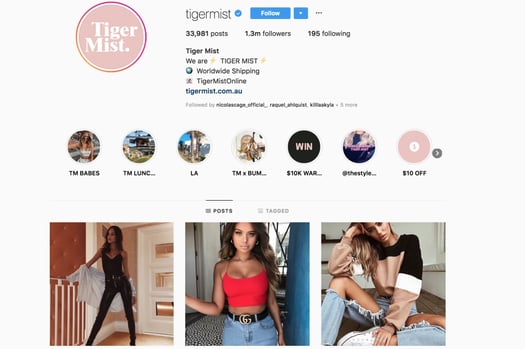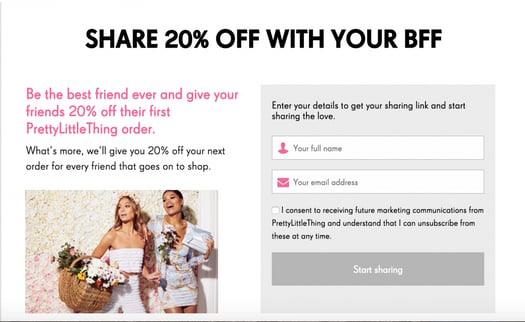Blog
How Can You Supercharge the Growth of Your Fashion Brand?
Introduction
We live in an era of intensive competition and outrageous opportunity. In the fashion industry, the internet still feels like a gold race. With 6,300 stores shutting down this year, shopping appears to have moved from traditional brick-and-mortar retail to digital channels. Many of the industry lost on the high street has been picked up by fast-growing online brands: like Asos, Missguided, and Farfetch. However, growing in this environment is hardly easy, by 2014, the internet had over 12 million eCommerce stores live, with some of these stores representing the fastest growing brands in the sector. Many successful brick and mortar stores have also turned to the internet to try to engage customers and increase profits.
Those online brands that have become successful have not done so by accident, they haven’t happened upon success, they have used some amazing growth techniques to propel their businesses.
Many industries have adopted growth tactics over the last few years. ‘Growth hacking’, for example, is a phrase that refers to strategies and techniques to grow your customer base in a naturally recurring way. When first coined in 2010 by Sean Ellis many of the ‘hacks’ used were slightly malicious towards customers. Some of these techniques have been proven to be essential drivers of growth still in 2018, like the use of social media, referrals and the creation of a blog.
However, the proliferation of these techniques means that to grow using these methods, you need to add an extra dimension to keep customers engaged. If everyone uses the same techniques, they often become less effective and require iteration to be successful again. Moreover, the 2018 customer is less trusting than she/he was when these techniques were first being used. “Growth Hacking” as a term seems to imply the using of customers, a strategy consumers have gotten wise to. Being in partnership with your customer, rewarding them and working with them to grow your business is the way to approach growth. Many of the most successful brands utilise their army of loyal customers to drive their success, an approach called Customer Advocacy Marketing.
Here are some proven growth strategies to grow your business through advocacy.
Social Media Activity
Social Media is intrinsically a medium that can fuel organic growth. A single successful post can generate hundreds of new potential clients instantly. Having a Social Media account is required to operate in 2018. Nick Ede, the CEO of East of Eden London, for example, stated,
“Having a strong social media presence is a must – this can be a really cost-effective way of selling product and communicating to your target customer.”
However, this approach is heavily saturated, so you need to work the medium to gain the benefits.
Firstly, for people to advocate to their friends about your product, you have to engage them regularly to keep your brand in the front of their mind. Remember that it’s completely free to engage with your customers across Instagram, Facebook, and other media platforms; so why not engage consistently? They can not only learn about the personality of your brand but also shop directly from many Social Media Platforms.
One amazing example is the online boutique Tiger Mist. Their Instagram account is updated hourly with their new styles and current favorites.

Generating this amount of content to maintain this level of engagement can be daunting. Innovative brands have begun using User Generated Content on the social media to fulfill the massive need they have. This UGC also has the benefit of being an authentic and representative of the customer base. As millennials trust UGC 50% more than traditional media, this will be both cheaper and more effective.
How could you up your social media game to drive growth and build advocacy?
Have a Blog
Having a blog gives customers an inside look into the backbones of the brand and gives it a personal feel. Moreover, if it resonates with your customers it will keep them coming back and reduce the all-important churn of customers. While the possibility of creating a rich blog is daunting, you can be reassured by the fact that the possibilities for content are endless.
Content, for example, doesn’t always have to be fashion. Bloggers like Not Jess Fashion and She Wears Fashion write about all kinds of topics like fashion, health, lifestyle, productivity, and even some personal pieces.
Moreover, you can source content from your passionate advocates. One example could be asking shoppers for their favorite looks with a description of why they think the look works. This could form a piece of content for itself, and at scale could provide a weekly engaging blog post. A blog will only engage if you regularly update it, make sure you create systems in order to keep people on your blog.

Sharing your Content
Once you have content it has to be easy to spread. Many sites make this easy by including social media buttons that will connect to apps like Facebook, Instagram, Pinterest, Twitter, etc.. Asking your readers to share articles they enjoy is a simple call to action that gives your work a larger opportunity to be seen. However, if others are doing it, how can you distinguish yourself?
How about rewarding the sharing of your content, like Lancôme does by giving customers reward points for sharing on social media. This can be achieved in many different ways: offering coupons, entrance in sweepstakes, a chance to be featured on a blog post, or any type of reward that makes the customer feel connected to the brand. You aren’t ‘growth hacking,’ you are partnering with your customer to grow a brand you and your customer both want to see grow.
Refer a Friend
Have customers acquire new customers for you with “refer a friend” programs. These programs have some of the best success rates for growing a brand quickly as they are so effective, but need to be well thought out. For example, these programs require incentives such as getting a percentage off your order or money back in order to reward your customers appropriately.
You should also give the referred friend a deal as well as your current customer. For example, Pretty Little Thing will give you and your friend 20% off when you refer and they purchase. This is a quick way to collect customers and easy to customize to your business’ personal promotion goal.
There are also cheaper ways of making a referral scheme work. At our Customer Advocacy Workshop, we discuss the alternatives you could use to make your referral scheme effective.
Integrate Feedback Loops Post Purchase
Post-purchase surveys give your company the chance to easily collect feedback on products and service. Having a survey available in an email notification or immediately post-purchase are great ways to interact somewhat personally with customers that already are involved with the brand. Shoppers will also feel that their voice is being heard and will create a bond between them and the brand.
These is also a great opportunity to say “thanks for purchasing!” and rewarding customers for loyalty. Incentives can also be put in place for filling out post-purchase surveys – which could be a percentage off their next purchase or another opportunity to refer a friend. This contributes to retaining old customers, something that is just as important as finding new customers, but it also encourages more advocacy in the future through iteration of product and customer satisfaction.
Conclusion
Being innovative is one of the key components of growing an online brand in a competitive market. Utilising the advocacy of your customers could be the differentiating factor between you and the other thousand fashion brands you’re competing with. While committing to advocacy may seem challenging, an advocacy platform like Duel could make it possible.
Duel is Customer Advocacy Platform which turns customers into advocates – we automate that lightning-in-a-bottle moment of a friend endorsing a brand. You should probably get a demo booked… (click me!)
If you want to look more at the theoretical background – take an intellectual swim by diving into a Customer Advocacy Marketing Workshop run by our consultancy arm (click me!).
Introvert? Voyeur? Watch Paul give a speech here or sign up for our newsletters to get monthly Customer Advocacy Marketing emails on tips, statistics and the science behind it.

 Via:
Via:  Via:
Via:  Via:
Via: 
